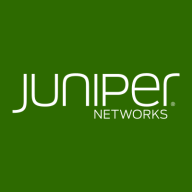


Sophos Cyberoam UTM and Juniper vSRX compete in integrated security solutions. Sophos Cyberoam UTM is favored for security visibility while Juniper vSRX is noted for flexibility and scalability, but Cyberoam's comprehensive security features give it the upper hand.
Features: Sophos Cyberoam UTM offers virus and spam filtration, web filtering, and identity-based policies with bandwidth management. Juniper vSRX provides robust traffic management, VPN capabilities, and application filtering with high performance in virtual environments.
Room for Improvement: Sophos Cyberoam UTM struggles with performance degradation during new attacks and has scalability issues and a cumbersome policy configuration process. Juniper vSRX faces challenges with GUI complexity, stability issues, and inconsistent support service.
Ease of Deployment and Customer Service: Sophos Cyberoam UTM supports on-premises deployment with reliable on-site support but mixed remote support experiences, praised for its efficient technical support. Juniper vSRX excels in public cloud deployments and hybrid environments but is criticized for support responsiveness.
Pricing and ROI: Sophos Cyberoam UTM offers competitive pricing in the mid-segment, seen as cost-effective with moderate ROI despite cumbersome licensing. Juniper vSRX has a high price point affecting smaller organizations, deemed a solid long-term investment but with questioned ROI due to high immediate costs.
Clients are now comfortable and not wasting productive hours on IT support.
We have experienced a positive return on investment by utilizing Fortinet's products.
There's definitely an ROI. Having a centralized way of managing and applying policies across the entire organization always helps.
He explained that it required a command line configuration, as it couldn't be done through the graphical user interface.
I would rate their support for FortiGate a nine out of ten.
They offer very accurate solutions.
I would rate their support a ten out of ten.
They resolve issues timely once connected.
They scale up really well from smaller models like the FortiGate 40 and 50 to bigger sites with the FortiGate 100 for more throughput - up to enterprise datacenters.
There are many options available, and we can choose the size of the box based on our requirements.
You can choose a cheaper model if you only have 20-30 users, but you will need to spend more money for a FortiGate solution that covers 5,000.
Juniper vSRX is a highly scalable solution, and I would rate its scalability a nine out of ten.
There are no bugs or glitches, and it doesn't crash or freeze.
Improper handling of these can lead to a memory surge, a well-known bug that can cause the entire system to freeze.
It is less stable than Palo Alto Networks and Check Point firewalls because there are lots of bugs in the latest firmware.
If I have put 10 GBPS of throughput on a firewall and I enable all of these features available, such as IPS or UTM functionalities, the throughput comes down to 1 GBPS.
By providing an integrated solution, users would have access to all features and functionalities within a single window, eliminating the need to navigate through multiple windows.
Investing in a solution that can accommodate such growth would be more cost-effective than repeatedly purchasing new hardware.
I would suggest improving the pricing, particularly the licensing model.
It would be beneficial if phone calls or SMS for two-factor authentication were available.
Secure SD-WAN is free of charge.
The most expensive part is the renewal of the license subscription.
FortiGate is priced lower than Palo Alto.
The pricing is competitive, being neither the most expensive nor the cheapest option.
It's easy to monitor the end-to-end network through the firewall.
The firewall, IPS, and VPN functions are the most valuable features.
FortiGate provides solid protection against viruses, malware, and other threats.
These features are crucial for our network security.
It provides bandwidth management, category management of websites, blocking certain elements, IPS blocking, DDoS protection, and VPN management between sites and clients.



Fortinet FortiGate offers comprehensive network security and firewall protection across multiple locations. It effectively manages data traffic and secures environments with features like VPN, intrusion prevention, and UTM controls.
Organizations rely on Fortinet FortiGate for its robust integration with advanced security policies, ensuring significant protection for enterprises, cloud environments, and educational sectors. It facilitates network segmentation, application-level security, and authentication management, securing communication within and between locations such as branches and data centers. Its efficient SD-WAN and UTM features enable streamlined data management and enhanced threat protection capabilities. Users appreciate its centralized management, facilitating seamless operations across diverse environments.
What are the key features of Fortinet FortiGate?
What benefits should users expect from Fortinet FortiGate?
Fortinet FortiGate is crucial in sectors like education, offering robust networks for secure data flow between campuses and facilitating remote learning. In enterprise environments, it allows efficient management of application traffic and security across multiple branches, while in the cloud, it seamlessly integrates with diverse platforms to enhance security infrastructure.
Juniper vSRX is a virtualized security platform that provides advanced threat protection for virtualized and cloud environments. It offers a comprehensive set of security features, including firewall, VPN, intrusion prevention system (IPS), and unified threat management (UTM).
With its scalable architecture, the vSRX can be easily deployed and managed across multiple virtual machines, making it ideal for organizations with dynamic and distributed networks. It also supports high-performance data processing, ensuring minimal impact on network performance.
vSRX is designed to integrate seamlessly with Juniper's broader security ecosystem, enabling centralized management and visibility across the entire network.
We monitor all Unified Threat Management (UTM) reviews to prevent fraudulent reviews and keep review quality high. We do not post reviews by company employees or direct competitors. We validate each review for authenticity via cross-reference with LinkedIn, and personal follow-up with the reviewer when necessary.